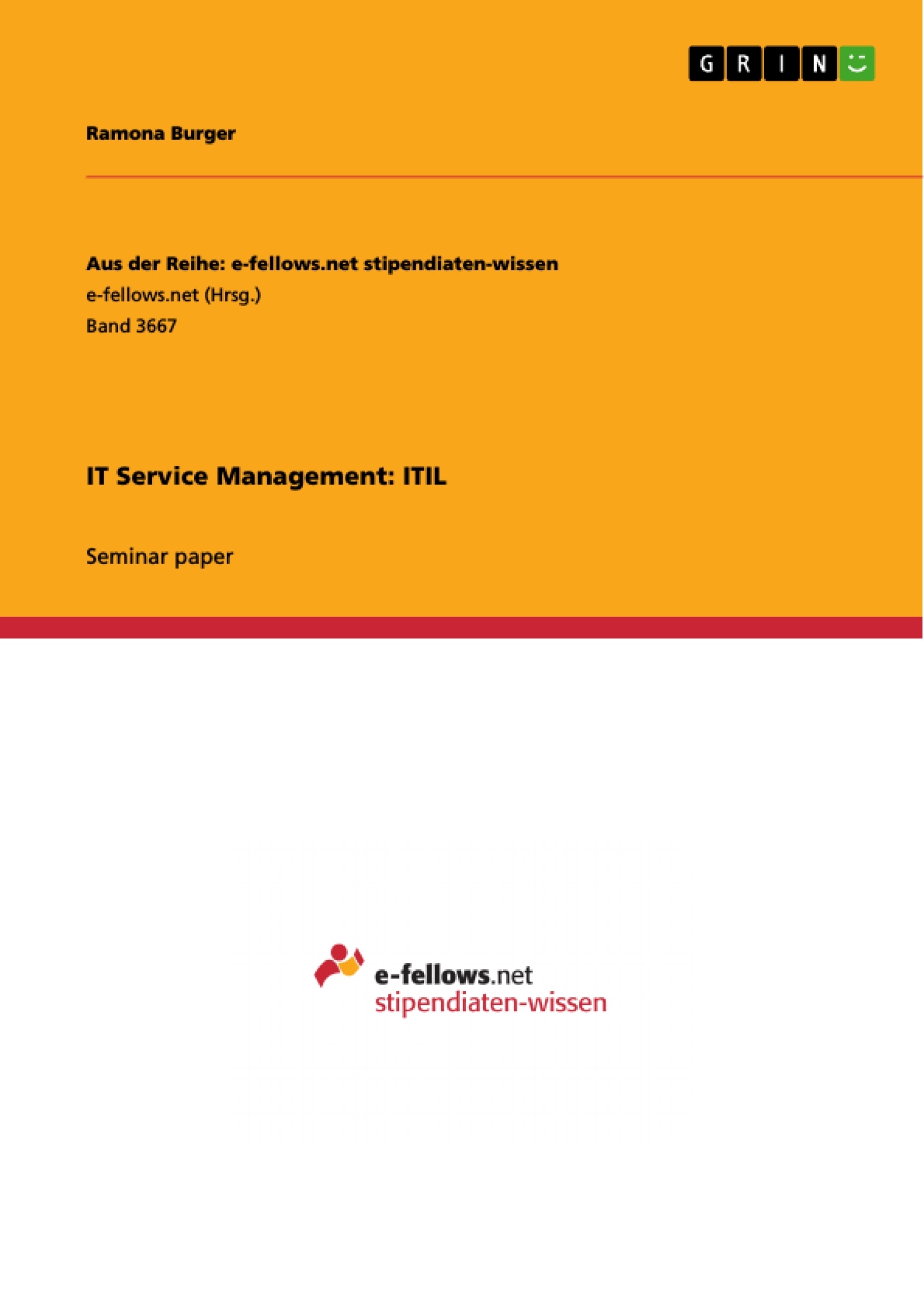As IT products and services have become more and more firmly established in all areas over the last few years, there is the need to manage all aspects around these products and services. This ranges from conception and implementation to customer contact and maintenance. To manage these aspects, the framework ITIL offers guidelines and processes. The collection of best practices follows a lifecycle concept and suggests processes for the management of IT products and service in each lifecycle phase.
Inhaltsverzeichnis (Table of Contents)
- Introduction
- What is ITIL?
- ITIL's History
- Key Concepts
- Service Lifecycle
- Service Strategy
- Service Design
Zielsetzung und Themenschwerpunkte (Objectives and Key Themes)
This document provides a comprehensive overview of the ITIL framework and its components. It aims to explain the origins of ITIL, its key concepts and its service lifecycle model. The document focuses on the application of ITIL within IT services, highlighting the essential processes and management aspects.
- ITIL as a framework for service management
- Key concepts and definitions within ITIL
- The ITIL service lifecycle and its components
- Best practices and processes for managing IT services
- The importance of continual service improvement
Zusammenfassung der Kapitel (Chapter Summaries)
The first chapter introduces IT service management and its relevance in today's world. It highlights the need for managing IT products and services throughout their entire lifecycle, from development to customer use.
The second chapter focuses on the definition and origins of ITIL. It explores the framework's history, its evolution through different versions, and the underlying principles of continual improvement. The chapter also discusses the significance of ITIL as an industry standard for service management across various sectors.
The third chapter defines key concepts within ITIL, including the notion of "service" and its various types. It further elaborates on service management, customer roles, and the responsibilities of the service provider.
The fourth chapter delves into the ITIL service lifecycle model. It explains the five components of the lifecycle and their individual processes. The chapter also provides a visual representation of the lifecycle model, showcasing the interconnectedness of its various phases.
The fifth chapter examines the "Service Strategy" component of the ITIL lifecycle. It describes the processes involved in defining a service strategy, including understanding customer needs, market trends, and the necessary operational procedures for delivering and managing services.
The sixth chapter focuses on the "Service Design" component of the ITIL lifecycle. It explains the processes involved in designing services, including the design of practices, processes, and guidelines to support the service strategy and deployment. The chapter also emphasizes the importance of integrating continual improvement capabilities to ensure ongoing service optimization.
Schlüsselwörter (Keywords)
ITIL, service management, IT services, best practices, lifecycle model, service strategy, service design, continual service improvement, service provider, customer, service catalogue, service level management.
- Quote paper
- Ramona Burger (Author), 2020, IT Service Management: ITIL, Munich, GRIN Verlag, https://www.grin.com/document/974345




